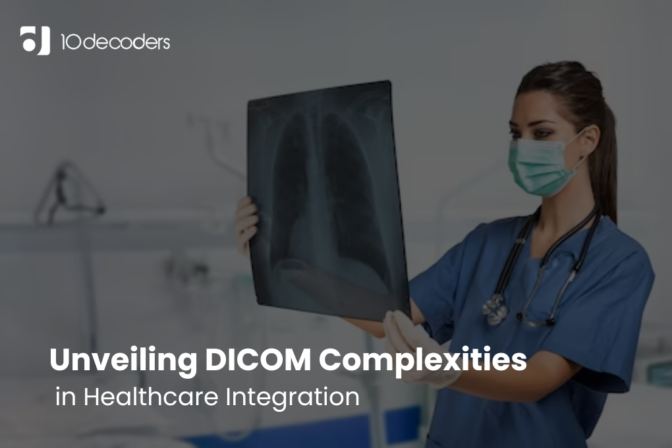Unveiling DICOM Complexities in Healthcare Integration
Introduction
Amidst the dynamic healthcare environment, the frictionless sharing of medical imaging data remains essential for providing superior patient care. The Digital Imaging and Communications in Medicine (DICOM) standard has undoubtedly revolutionized how medical images are stored, transmitted, and accessed. Yet, achieving seamless interoperability among varied DICOM systems remains a formidable challenge, profoundly impacting patient treatments and diagnostics. In this blog, let us delve deep into the DICOM challenges in modern healthcare.
Unraveling DICOM's Complex Healthcare Integration Obstacles
DICOM, the standard for medical imaging, faces integration challenges in healthcare due to diverse vendor technologies and interoperability complexities.
Legacy Systems and Vendor-Induced Silos
Moving beyond technical hurdles, interoperability faces a few organizational challenges. Many healthcare facilities operate on older systems due to cost concerns or the potential disruptions posed by upgrades. While functional, these legacy systems often lack compatibility with newer, advanced platforms. Vendors introduce proprietary extensions or features that aren’t universally supported to carve unique market positions. This unintentionally creates silos, trapping data within one system and limiting access from others.
Data Variations
Inconsistencies in data formats, metadata tagging differences, or patient information recording variations hinder smooth data exchange. For instance, a CT scan labeled with one patient identifier might not align with the identifier used in another system, potentially leading to data mismatches or duplications. Though seemingly minor, these discrepancies can significantly impact diagnostics and treatments, where precise patient data is paramount.
Limited Interoperability
The immediate consequence of restricted interoperability is the potential delay in patient care. Inaccessible or non-integrated imaging data can delay diagnosis, treatment planning, or crucial surgical interventions. These delays can have severe repercussions in critical scenarios where time is crucial.
Financial Impact & Operational Costs
Beyond clinical implications, limited interoperability brings substantial financial burdens. Institutions invest in additional software or hardware to bridge compatibility gaps. Manual data transfers and conversions demand time and resources, leading to increased operational expenses. Furthermore, interoperability-related data errors can result in billing inaccuracies, claim denials, or potential legal issues.
Learn How to Shape DICOM's Future Compatibility Landscape
Exploring the evolving landscape of DICOM compatibility opens doors to shaping its future. Understanding the nuances and advancements within DICOM standards facilitates seamless interoperability and lays the groundwork for transformative innovation.
VNAs
The emergence of Vendor-Neutral Archives (VNAs) presents a promising remedy for interoperability challenges. These archives empower medical institutions to store imaging data uniformly, irrespective of its source or originating system. Centralizing data through VNAs ensures accessibility and consistency across diverse platforms, breaking down silos and fostering seamless communication.
Universal Viewers
Universal viewers offer a consistent interface for data visualization, transcending diverse data sources and formats, complementing VNAs. By providing a unified viewing experience, regardless of the underlying data, universal viewers enhance collaboration and simplify interactions among various systems.
Collective Effort
Industry consortiums, open-source initiatives, and global standardization are pivotal in tackling interoperability challenges. These collaborative endeavors bring together vendors, healthcare institutions, and experts to establish universally accepted standards, fostering best practices and innovative solutions.
Global Success Stories of Interoperability's Impact on Healthcare Innovation
Drawing insights from successful implementations worldwide offers valuable lessons. For instance, a Scandinavian multi-hospital network’s adoption of a unified VNA streamlined data access across facilities, ensuring enhanced patient care continuity.
Similarly, a North American radiology clinic’s embrace of a universal viewer simplified workflows and reduced training requirements. These real-world instances exemplify the tangible benefits of prioritizing interoperability, providing actionable insights for others navigating similar challenges.
Key Takeaway
In the evolving healthcare landscape, achieving seamless communication between DICOM systems stands is a critical yet challenging endeavour. Resolving these obstacles demands a multi-faceted strategy encompassing standardized protocols, vendor-neutral archives, universal viewers, collaborative industry efforts, and continual technological innovation. Only through concerted efforts and advancements can the landscape of DICOM compatibility be reshaped for improved healthcare outcomes.



